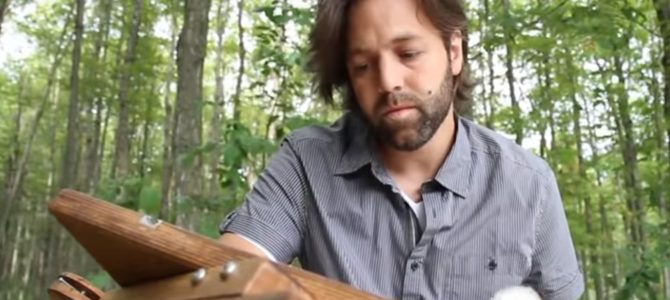
For many years, YouTube was defined by videos of tortoises humping shoes, intrepid adventurers attempting to swallow large spoonfuls of cinnamon, and future cannibals. Now, some of the most popular videos on YouTube involve figures like Jordan Peterson and Sam Harris, free-thinkers willing to disrupt the mainstream consensus and inject a little Jungian psychology and evolutionary theory into your day.
YouTube has become a great place for discussing renegade philosophies. Instead of devolving, YouTube’s evolving. It’s kind of a miracle. Of course, YouTube is also a great place to learn about how we are all a genetic experiment created by aliens. It is a decidedly mixed bag.
Among the curious and off-beat viewpoints you can find on YouTube these days, one is particularly striking: Christianity. By permitting a venue for views outside the mainstream, YouTube is letting some of the most ancient and venerable traditions sneak in through the “out” door.
To provide a prime example: the French-Canadian Eastern Orthodox icon carver Jonathan Pageau has begun to gain a following for his YouTube channel “The Symbolic World,” which has also recently become a podcast on iTunes. His excellent videos have garnered enthusiastic support from Peterson, among others. Just as Peterson gained a following for his scientific and psychological interpretations of the Bible, Pageau is earning street cred as a compelling YouTube preacher.
Pageau Shares His Religious Discoveries With the World
Pageau’s videos demonstrate that Christianity can be both symbolically true and actually true. He explores the deep symbolism of the faith without denying the reality of Christ’s birth, life, death, and resurrection. A typical Pageau talk will range from legends about Alexander the Great to zombie movies to overlooked and underrated Christian theologians like St. Gregory of Nyssa, without any of this seeming fuzzy or incoherent. It all fits into place, just like an Eastern Orthodox mosaic.
Formerly a Baptist, Pageau converted to Eastern Orthodoxy after a period of searching, drawn to its emphasis on spiritual transformation. The Eastern Orthodox Church believes that, since humans were originally made in the image of God, they can, with God’s grace, repair that broken image and enter a state of spiritual wholeness.
Along with this religious conversion came a process of artistic conversion. Pageau had experienced the contemporary art world but, not sharing its cynicism and obsession with irony, began carving traditional Orthodox icons.
The religious landscape badly needs compelling voices that can reveal the eternal validity of meaningful symbols and images. Pageau does this particularly well in videos on subjects like “The Symbolism of the Tree” and “Garments of Death, Garments of Light.” He is restoring a sense of what the great religious scholar Mircea Eliade called the “sacred center.”
Finding the Sacred Center
Eliade observed that human beings have a universal need to create “centers” that are filled with sacred and symbolic power. These centers are places where the divine world touches the everyday world, where the ordinary and the extraordinary get chummy and mingle.
The examples are so obvious you might even forget to notice them. Think about the altars in churches: they are the place ordinary bread and wine are transformed into the flesh and blood of God—literally if you are Catholic or Eastern Orthodox, symbolically if you are Protestant. Eternity enters into time on the altar. The Ka’aba in Mecca is an obvious example from the Muslim world. It is a sacred shrine containing a meteorite, symbolically linking earth with the heaven from which the meteor originally fell.
From Hinduism to Judaism, from the sacred city of Varanasi in India to the Wailing Wall in Jerusalem, sacred centers are everywhere. Secular culture creates these centers, too: the Washington Monument is a sacred Egyptian obelisk, and the Thomas Jefferson and Abraham Lincoln memorials put heroic political figures at the sacred center.
In other words, the sacred center is where a culture puts its meaning. Even murderous Communist regimes cannot help creating sacred centers. Consider the embalmed corpses of Vladimir Lenin and Mao Zedong, still on display in a twisted parody of the miraculously preserved bodies of deceased saints.
Western Culture’s Sacred Center Is Christ
For Pageau, the sacred center of Western Culture as a whole is, of course, Christ. In Eastern Orthodoxy, Christ is not just a great moral teacher: he is the central supporting power of the entire universe. He is the Logos, the divine force that creates meaning.
Naturally, that meaning radiates through the universe, charging everything with symbolism. Every minor symbol ultimately leads back to one mega-meaning, presented in the life of Christ. It is the goal of human beings to open themselves to the higher influence of the Logos through prayer and religious practices, which allow them to become transformed into mini-images of the Logos.
As Pageau puts it, “All the instances of meaning extend from and point to the origin of meaning, which is the Divine Logos, the pattern not made by hands, who entered through his incarnation into the cosmic story, so to become not only the origin of the story, but its very center.”
Coming Back to the Sacred Center Again
In a stand-out talk delivered at Furman University entitled, “Zombies, Postmodernism, and Art,” Pageau expounds on why zombie movies were so wildly popular over the last decade or so. In his view, they are symbolic representations of a world without Logos. Zombies are both an out-of-control mob and a group of self-centered individuals, since each zombie is mindlessly pursuing its own desire: fresh brains. The zombie is trying to devour the very thing it does not and cannot have, which is meaning and the organ that processes meaning.
Pageau says, “The zombie wants to eat your brains because it cannot eat the mind, it cannot inhabit the mind.” That is how the culture feels in 2018: devoid of meaning, badly in need of it, but unable to ingest it. This makes it spiritually destructive. Fortunately, thinkers like Pageau are kindling a little light in the darkness.
The process of becoming cultural zombies is the corruption of the sacred center that Eliade mentioned. When meaning falls out of a culture, that culture is left without a center. In the wake of this catastrophe, it searches for a substitute center in any number of bizarre and unsavory locations. Just look at a few comments on Twitter or at the bottom of any article online: people are filling their God-shaped holes with perpetual outrage, usually related to identity politics.
However, from the Eastern Orthodox perspective, one attains true identity by trying to reflect divine meaning in one’s own life. For this reason, the symbolism Pageau discusses gives life purpose and direction. It provides a map that leads back to the sacred center.









